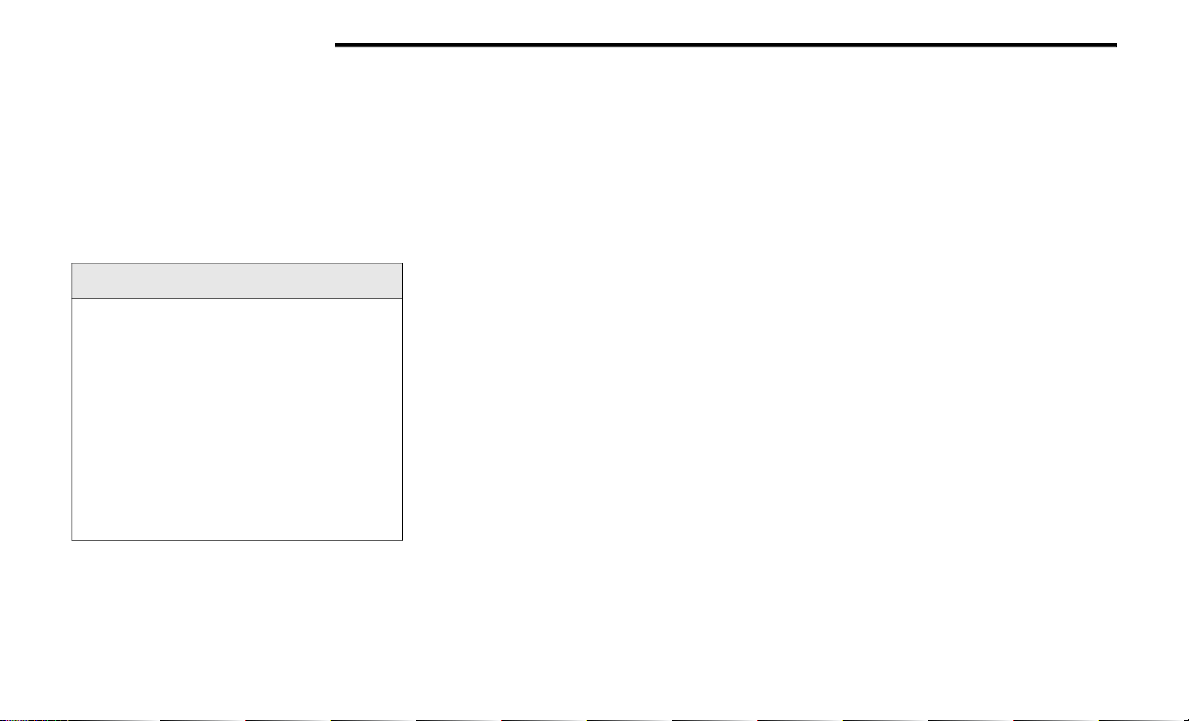Loading ...
Loading ...
Loading ...

262 SERVICING AND MAINTENANCE
The cap should be inspected and cleaned if
there is any accumulation of foreign material on
the sealing surfaces.
NOTE:
Be sure you do not mix the engine coolant
system pressure cap with the intercooler
system pressure cap. These caps are not inter-
changeable.
Disposal Of Used Coolant
Used ethylene glycol-based coolant (antifreeze)
is a regulated substance requiring proper
disposal. Check with your local authorities to
determine the disposal rules for your commu-
nity. To prevent ingestion by animals or chil-
dren, do not store ethylene glycol-based coolant
in open containers or allow it to remain in
puddles on the ground. If ingested by a child or
pet, seek emergency assistance immediately.
Clean up any ground spills immediately.
Coolant Level
The coolant bottle provides a quick visual
method for determining that the engine coolant
(antifreeze) level is adequate. With the engine
off and cold, the level of the engine coolant
(antifreeze) in the bottle should be between the
ranges indicated on the bottle.
The radiator normally remains completely full,
so there is no need to remove the radiator cap
unless checking for engine coolant (antifreeze)
freeze point or replacing engine coolant (anti-
freeze). Advise your service attendant of this. As
long as the engine operating temperature is
satisfactory, the coolant bottle need only be
checked once a month.
When additional engine coolant (antifreeze) is
needed to maintain the proper level, it should
be added to the coolant bottle. Do not overfill.
Points To Remember
NOTE:
When the vehicle is stopped after a few miles/
kilometers of operation, you may observe vapor
coming from the front of the engine compart-
ment. This is normally a result of moisture from
rain, snow, or high humidity accumulating on
the radiator and being vaporized when the ther-
mostat opens, allowing hot engine coolant (anti-
freeze) to enter the radiator.
If an examination of your engine compartment
shows no evidence of radiator or hose leaks,
the vehicle may be safely driven. The vapor will
soon dissipate.
Do not overfill the coolant expansion bottle.
Check the coolant freeze point in the radiator
and in the coolant expansion bottle. If engine
coolant (antifreeze) needs to be added, the
contents of the coolant expansion bottle
must also be protected against freezing.
If frequent engine coolant (antifreeze) addi-
tions are required, the cooling system should
be pressure tested for leaks.
WARNING!
Do not open hot engine cooling system.
Never add engine coolant (antifreeze) when
the engine is overheated. Do not loosen or
remove the cap to cool an overheated
engine. Heat causes pressure to build up in
the cooling system. To prevent scalding or
injury, do not remove the pressure cap
while the system is hot or under pressure.
Do not use a pressure cap other than the
one specified for your vehicle. Personal
injury or engine damage may result.
20_LA_OM_EN_USC_t.book Page 262
Loading ...
Loading ...
Loading ...